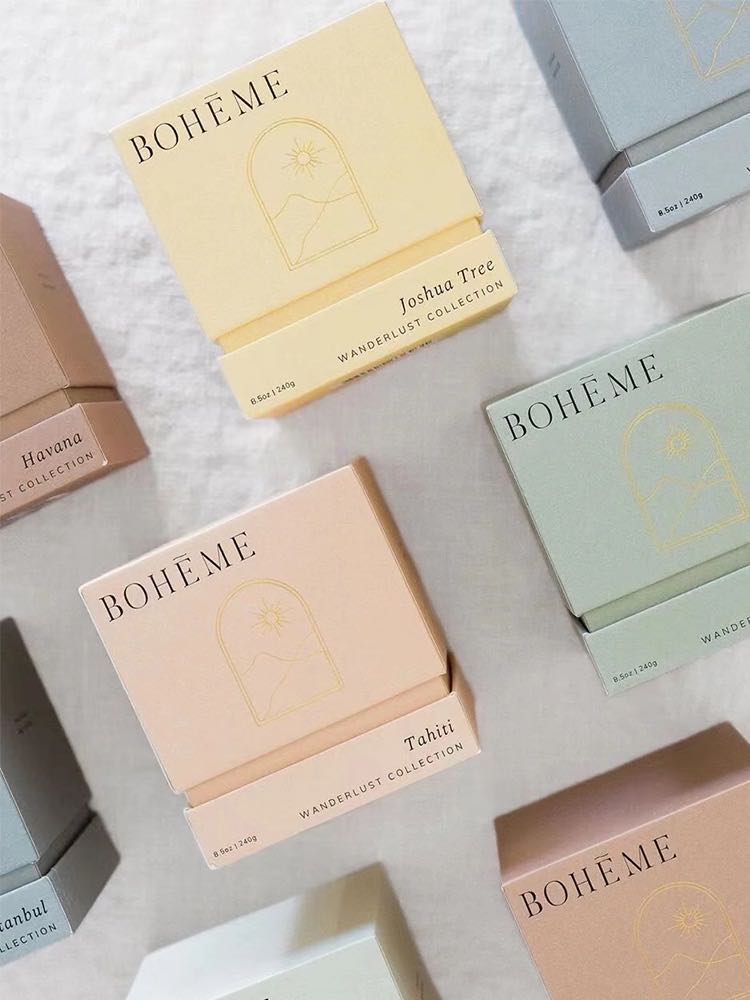The use of rigid boxes for packaging represents a premium choice for brands looking to make a statement with their product presentation. However, the cost associated with this premium choice can be a hurdle for some businesses. Understanding why rigid box packaging is costly and exploring alternate solutions can be a game-changer in managing packaging budgets without compromising on quality. In this article, we delve into the costs associated with rigid box packaging and present alternate solutions that can be considered.
The Cost Factors Behind Rigid Box Packaging
Rigid box packaging is synonymous with luxury and quality. The sturdy construction, high-quality materials, and immaculate finishing make them a preferred choice for high-end products. However, these benefits come with higher production costs. Here are some of the factors contributing to the cost:
Material Quality
The primary material in hard box packaging is high-grade paperboard or chipboard which is known for its rigidity and sturdiness. The material cost escalates especially when premium or specialty papers are used. If additional materials like magnets for closures, foam or plastic inserts for product security are utilized, the material costs climb further.
Complex Manufacturing Process
Rigid box packaging demands a labor-intensive and complex manufacturing process. It requires skilled labor for precise cutting, folding, and assembling to ensure the box maintains its shape and structure. The intricate craftsmanship involved further drives up the labor costs. Additionally, the setup time on machines is higher, and the production speed is slower compared to other packaging types, which significantly increases the manufacturing costs.
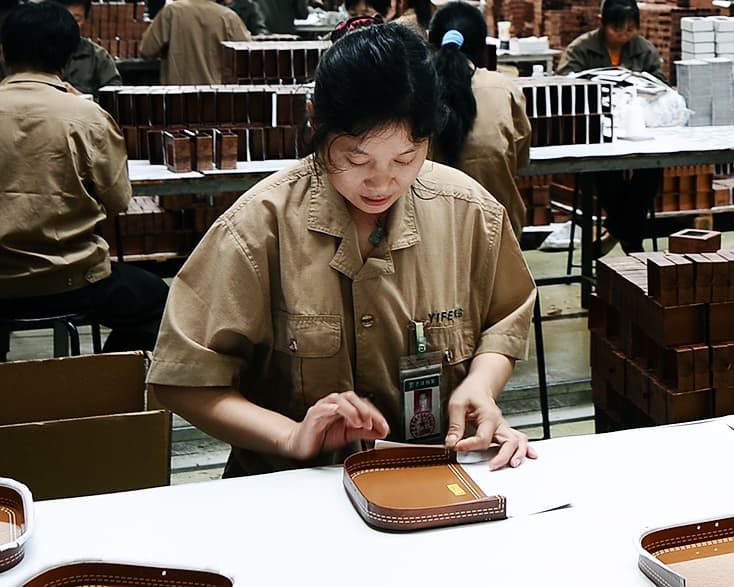
Customization
Customization is a significant cost factor in rigid box packaging. Custom designs with unique shapes, sizes, or personalized printing require additional design and production efforts. Specialized tooling might be needed for unique designs, and every customization requirement extends the production time and incurs extra costs. High-quality printing with superior finishes like gloss or matte lamination, UV coating, embossing, debossing, or foil stamping not only enhances the aesthetic appeal but also adds to the cost.
Logistics Cost
Rigid boxes are bulkier and occupy more space which leads to higher shipping and storage costs. Their rigid structure requires more substantial packaging to protect them during transit, increasing the logistics cost. Moreover, their non-collapsible nature means they take up more space in storage and during transportation, which in turn, escalates the logistic expenses.
Alternate Packaging Solutions for Cost Efficiency
The allure of rigid box packaging is undeniable, but the cost can be a deterrent for some businesses. So, are there any methods or alternatives to reduce the cost?
The answer is yes. Here we will explore some alternate packaging solutions that can be both cost-effective and quality-retaining.
Utilizing Folding Cartons
Transitioning from rigid box packaging to folding cartons is a practical step in cost reduction. Folding cartons, being lighter and requiring less material, significantly cut down the production costs. They employ multiple layers of folding board folded onto itself to imitate the sturdiness and weight of a typical rigid box. Let’s elucidate this with a couple of examples:
Example 1: Redesigning Book Shape Rigid Boxes
Traditional book shape rigid boxes are commonly crafted from chipboard with wrapping paper. A viable alternative could be employing a double-wall folding board to simulate the effect of the inner box. The thickness of the chipboard is approximately 2mm. By using a 1cm thick double-wall, we can achieve a similar level of sturdiness.
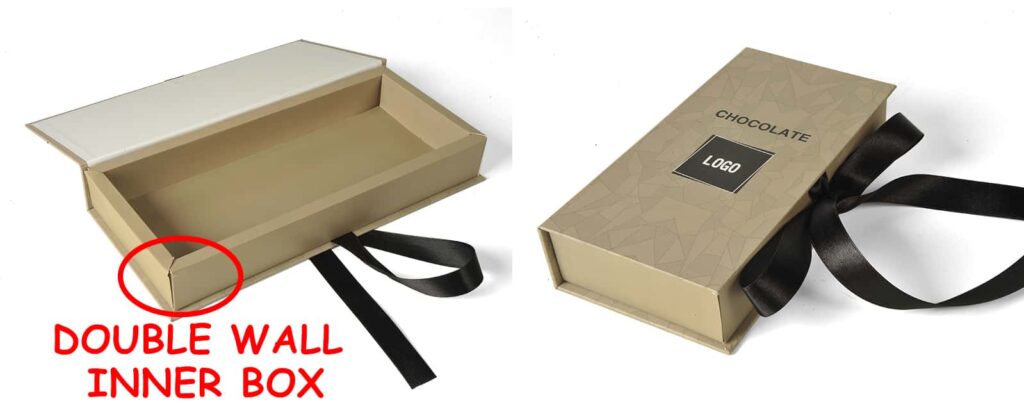
Visually, both materials can result in a comparable appearance when fully assembled.
Example 2: Modifying 2-Piece Rigid Boxes
Another scenario could be a 2-piece rigid box where we substitute the top material with a 400gsm folding board. Once folded, the two layers of material attain a thickness of around 1mm. Coupled with a rigid base, the box retains the full rigid box appearance and sturdiness. Through such material substitution and design modification, cost-saving is realized while still maintaining the desired aesthetic and structural integrity inherent to rigid boxes.
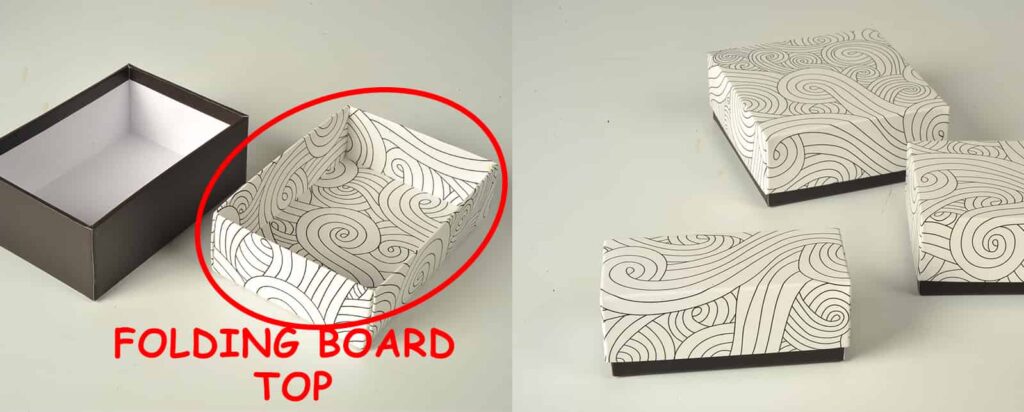
The above are merely two avenues we’ve explored using folding board. There are undoubtedly more methods to delve into. Interested in discovering more cost-effective packaging solutions tailored to your brand? Connect with us and let’s innovate together.
It’s essential to note that these solutions may not necessarily work with all types of products. Each product has its unique packaging requirements, and it’s crucial to evaluate the feasibility and implications of using folding cartons on a case-by-case basis to ensure the packaging aligns with the brand’s standards and the product’s protection needs.
Utilizing Inserts
In the endeavor to cut down expenses tied to rigid box packaging without compromising the product’s protection and presentation, incorporating inserts is a pragmatic solution. Inserts, crafted from economical materials such as foam, molded pulp, corrugated paper, or thin plastic, can cradle the product securely, minimizing the necessity for a more robust exterior box made from pricier materials.
The brilliance of employing inserts lies in their customizability. They can be meticulously designed to snugly hold the product, thereby reducing the demand for a sturdier exterior box. This approach not only optimizes cost but also preserves the aesthetic appeal and safety of the product.
Embracing Collapsible Rigid Boxes
Collapsible rigid boxes, also known as foldable rigid boxes, present a unique solution to the cost concern associated with traditional rigid boxes. These boxes retain the luxurious feel and durability of rigid boxes while being foldable for more cost-effective transportation and storage.
Collapsible rigid boxes are designed to be easily assembled and collapsed, significantly reducing the space they occupy during transportation and storage. This feature makes them especially favorable for large-sized packaging and overseas shipping.
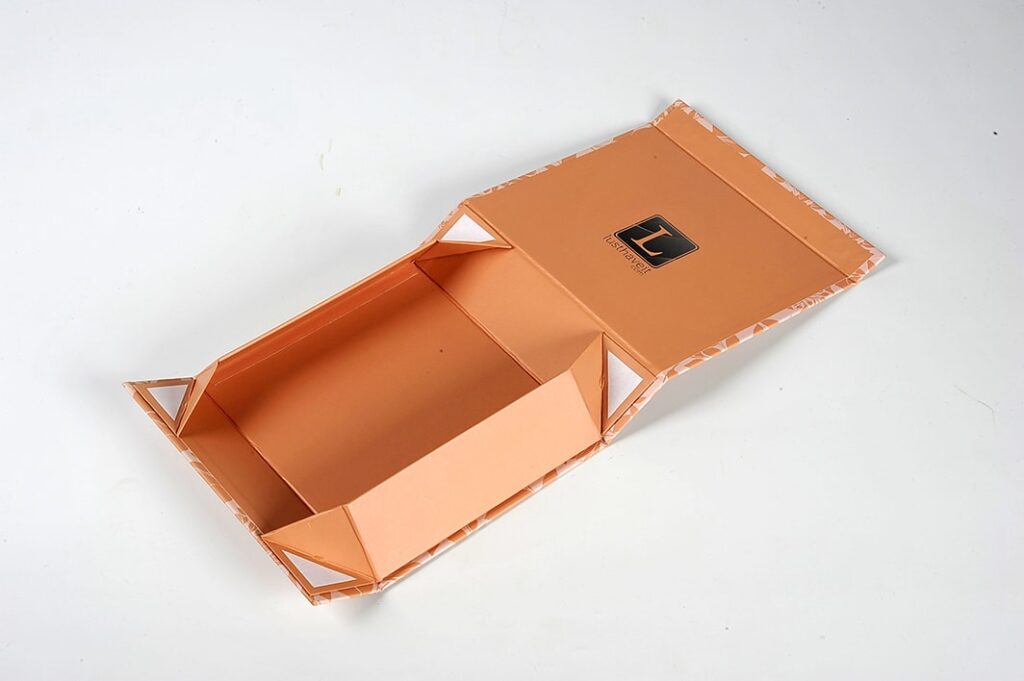
Collapsible rigid boxes offer a fine balance between aesthetic allure and protective functionality, which are popular for cosmetics, electronics, luxury goods, and high-end apparel sectors.
By switching to collapsible rigid boxes, companies can enjoy the dual benefits of reduced shipping costs and premium presentation, making it a viable alternative for those looking to cut costs without compromising on quality.
Conclusion
Navigating the cost concerns while maintaining the premium appeal of packaging can be a complex endeavor. However, with innovative solutions at your disposal and the opportunity to collaborate with a seasoned rigid box manufacturer, achieving a balance between cost and quality is within reach.
Ready to explore economical, high-quality packaging solutions? Contact us today, and let’s innovate together to create packaging that resonates with your brand and audience.

